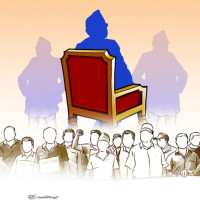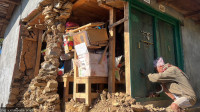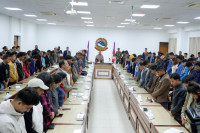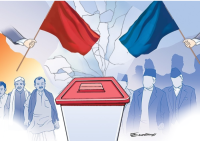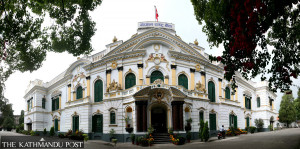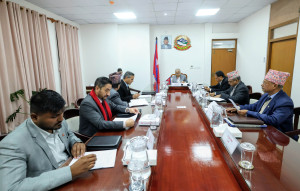Columns
A hot take on Gen Z protests
Participants of Gen Z protests deserve a fair hearing and not a repetition of the same old ‘guff’.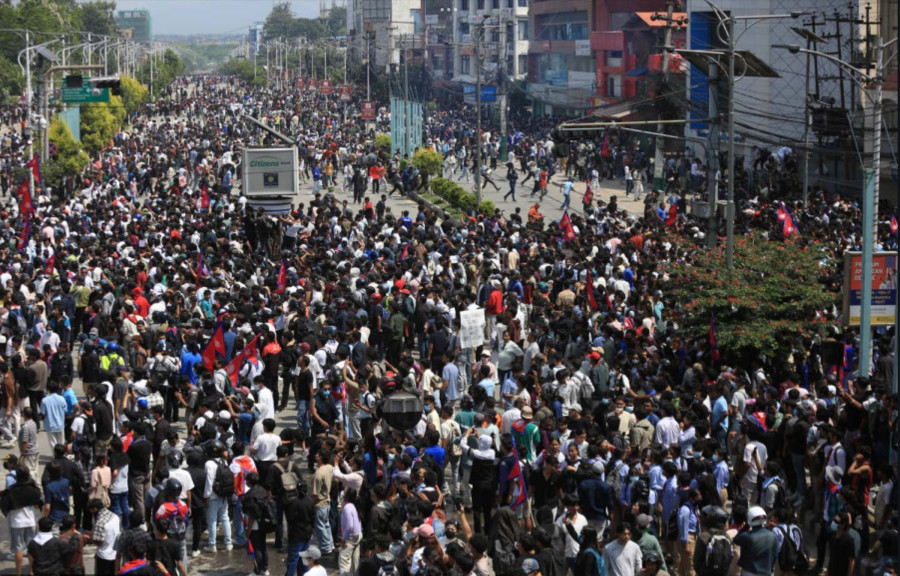
James Sharrock
It is natural to want to analyse the events of September 8-9. Newspapers, online forums, webinar discussions and podcasts have all discussed the meaning of what happened. However, as with the post-earthquake discussions, people’s responses tend to follow prior assumptions about how Nepal works. The biggest challenge is not to generate more ‘hot takes’ but to listen, understand what happened and why, and to question our assumptions about Nepal and Nepali politics, starting from the point of what and who we don’t know, instead of what we think we already do.
With some excellent exceptions, most explanations have been predictable and well-worn. One explanation is that this was chaotic and nihilistic violence generated by young, poorly educated and inarticulate smartphone warriors and that it has, for that reason, already failed, and has no lasting or wider meaning. Another, from the Left: As it is not an obviously class-based alliance representing the poor and there are no leaders or party organisations, the movement will fracture and again, not create lasting change. Third, this protest was orchestrated by foreign powers via NGOs, aimed at destabilising Nepal and/or removing KP Oli from his position of Prime Minister. Fourth, the protest was a continuation of the pro-monarchy riots of March 2025.
The first explanation fails to explain the organisation behind the initial protest, including the levels of coordination needed to produce consistent messaging (young people interviewed on Nepali news channels repeatedly pointed out that it was about corruption, not the social media ban), as well as the huge support for the protesters in wider society. The Left’s explanation implies that we know best what political action entails, but also really struggles to explain the politicisation of urban youth and the role played in the protests by a newer type of NGOs (not oriented around donor-focused ‘projectisation’). Predictably, the Left’s explanation presumes the truly authentic poor Nepali to be a farmer in “remote” Karnali, not an urban jobless youth who speaks English and repurposes global memes.
The third explanation wildly overstates the importance of Nepal in global affairs, whilst ironically understating the global influence that Nepal does possess (in UN peacekeeping, via the diaspora and, after the protests, young people in faraway countries took inspiration from Nepal). The fourth explanation doesn’t do the basic journalistic homework of typing ‘riots, protests’ + ‘youth’ + ‘Nepal’ into an internet search engine. Riots didn’t begin this year: There have been a series of riots and protests in recent years involving young people over access to migration permits, foreign language exams, road traffic accidents and more, most of which were considered marginal to ‘Serious Politics’.
Wrong assumptions
Before I impose my own ‘hot take,’ what deeper assumptions are animating people’s op-eds and opinions? The deepest assumption is, of course, that, even though no one saw this protest coming, we can confidently know what will or should happen next. The next most common assumption is that old political parties are too powerful and too deeply networked across Nepal to be removed from Nepali public life. This assumption, even in the view of many Gen Z-ers, is likely to be true, but it has imprisoned columnists in pouring scorn on any change that dares to think of politics beyond the internal squabbles of the traditional parties. Hot takers also assume that anyone who lives in urban areas and speaks English in Nepal is basically elite.
Another assumption: You need to be articulate to enter politics. Arguably, no one understands this better than the very online Gen Z protesters themselves, many of whom were obviously ill-prepared for sudden public attention. But what kind of articulation is really valued and by whom? Fluency in idioms? Use of big words? The assumption is really asking protesters to play by the known rhetoric of those they oppose.
Finally, there is a weird assumption about social media from some commentators in which the protesters are assumed to be blindly following clickbait and algorithms, rather than critically engaging with each other on social media or using messenger forums and tools like Discord for their own ends. There is a legitimate problem about online misinformation, which several organisations in Nepal are doing fantastic work on, but the assumption here is different—namely that without online instructions, the young people wouldn’t be protesting. The common thread animating all of these takes is that the protesters are puppets of some other actor and can’t think or act for themselves.
Hot take
The only hot take I have is that we still don’t know, in my view, much, if anything, about the Gen Z groups. We, outside the movement, still know little about what happened on September 8 and 9, or about the origins of the protest groups, or what happened in protests in areas outside Kathmandu, or how Gen Z groups organised themselves. The myth that Nepal or Kathmandu is a sano sansar was well and truly smashed by a movement and groups that weren’t widely known beforehand, didn’t meet many foreigners like me, didn’t write many op-eds, and, by and large, weren’t ‘noted’ or networked personalities but were clearly incredibly active, political and engaged.
They have told us their problems: They have to support both their parents and themselves, often unsuccessfully; they live in urban areas and attend private school at a massive cost to their families; they don’t get that next chance that all their struggle is for despite being smarter than peers who do; and yet they have to try again and again to make it with no safety net or plan B. But these are not problems many analysts and commentators understand, prioritise, or even take seriously. Everyone has had a struggle period, but not everyone’s struggle period is the same.
Some media houses have sought to interview and meet some of the Gen Z protesters, leading to fascinating discussions which, in one ‘take’, single-handedly refute most of the explanations above. Sometimes newness is overstated, and it is right to maintain a critical eye. But what happened in two days in September does appear to stem from a different and original movement, whose participants deserve a fair hearing and not a repetition of the same old guff.




 19.12°C Kathmandu
19.12°C Kathmandu
